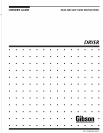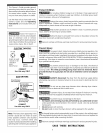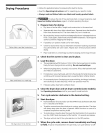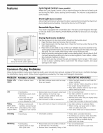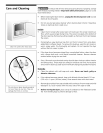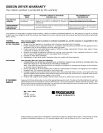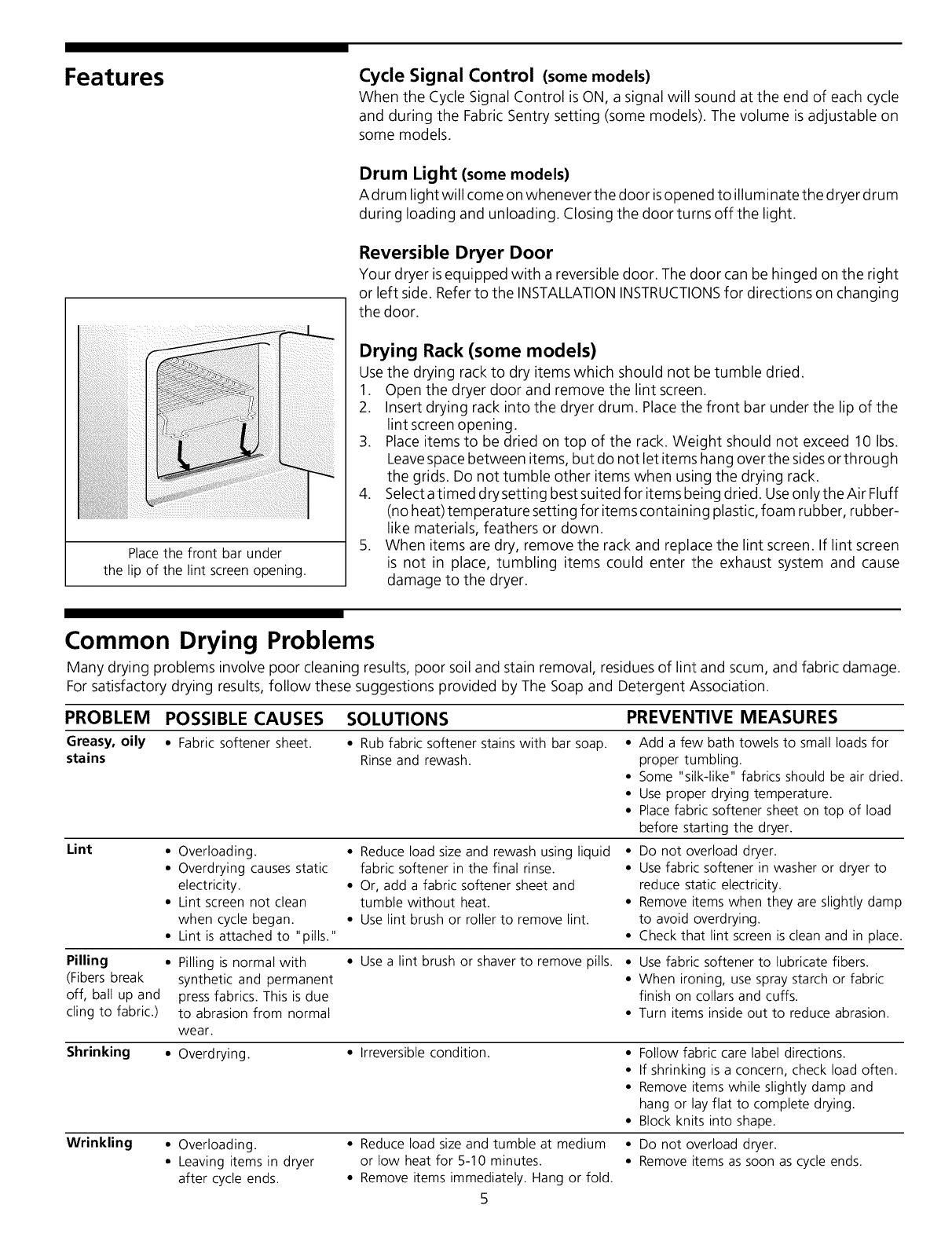
Features
Placethe front bar under
the lip of the lint screen opening.
Cycle Signal Control (some models)
When the Cycle Signal Control is ON, a signal will sound at the end of each cycle
and during the Fabric Sentry setting (some models). The volume isadjustable on
some models.
Drum Light (somemodels)
A drum light will come on whenever the door isopened to illuminate the dryer drum
during loading and unloading. Closing the door turns off the light.
Reversible Dryer Door
Your dryer is equipped with a reversible door. The door can be hinged on the right
or left side. Refer to the INSTALLATIONINSTRUCTIONSfor directions on changing
the door.
Drying Rack (some models)
Usethe drying rack to dry items which should not be tumble dried.
1. Open the dryer door and remove the lint screen.
2. Insert drying rack into the dryer drum. Place the front bar under the lip of the
lint screen opening.
3. Place items to be dried on top of the rack. Weight should not exceed 10 Ibs.
Leavespace between items, but do not let items hang over the sides or through
the grids. Do not tumble other items when using the drying rack.
4. Select atimed drysetting best suited for items being dried. Useonlythe Air Fluff
(no heat) temperature setting for items containing plastic, foam rubber, rubber-
like materials, feathers or down.
5. When items are dry, remove the rack and replace the lint screen. If lint screen
is not in place, tumbling items could enter the exhaust system and cause
damage to the dryer.
Common Drying Problems
Many drying problems involve poor cleaning results, poor soil and stain removal, residues of lint and scum, and fabric damage.
For satisfactory drying results, follow these suggestions provided by The Soap and Detergent Association.
PROBLEM
Greasy, oily
stains
Lint
Pilling
(Fibers break
off, ball up and
cling to fabric.)
Shrinking
Wrinkling
POSSIBLE CAUSES SOLUTIONS PREVENTIVE MEASURES
• Fabric softener sheet. • Rub fabric softener stains with bar soap. • Add a few bath towels to small loads for
Rinse and rewash, proper tumbling.
Overloading.
Overdrying causes static
electricity.
Lint screen not clean
when cycle began.
Lint is attached to "pills."
• Reduce load size and rewash using liquid
fabric softener in the final rinse.
• Or, add a fabric softener sheet and
tumble without heat.
• Use lint brush or roller to remove lint.
• Some "silk-like" fabrics should be air dried.
• Use proper drying temperature.
• Place fabric softener sheet on top of load
before starting the dryer.
• Do not overload dryer.
• Use fabric softener in washer or dryer to
reduce static electricity.
• Remove items when they are slightly damp
to avoid overdrying.
• Check that lint screen isclean and in place.
• Pilling is normal with • Use a lint brush or shaver to remove pills. •
synthetic and permanent •
press fabrics. This is due
to abrasion from normal •
wea r.
• Overdrying. • Irreversible condition. •
• Overloading.
• Leaving items in dryer
after cycle ends.
• Reduce load size and tumble at medium
or low heat for 5-10 minutes.
• Remove items immediately. Hang or fold.
5
Use fabric softener to lubricate fibers.
When ironing, use spray starch or fabric
finish on collars and cuffs.
Turn items inside out to reduce abrasion.
Follow fabric care label directions.
If shrinking is a concern, check load often.
• Remove items while slightly damp and
hang or lay flat to complete drying.
• Block knits into shape.
• Do not overload dryer.
• Remove items as soon as cycle ends.



